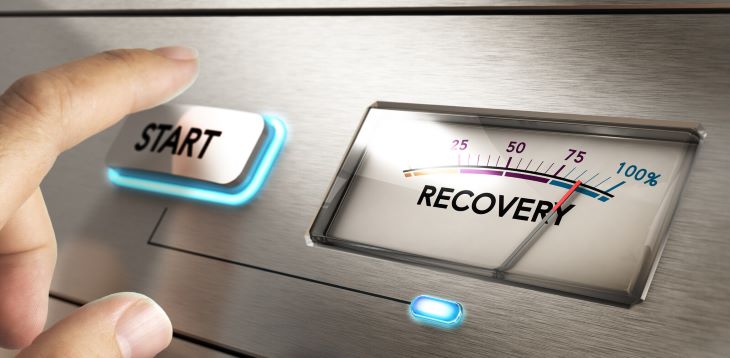The Importance of Business Continuity
We have discussed the importance of a well-planned backup and disaster recovery strategy to safeguard your business and critical data in our blog. Most businesses believe they only need a backup plan, but it is very important to look at the whole backup and disaster recovery strategy and formalise it in a Business Continuity plan.

We have discussed the importance of a well-planned backup and disaster recovery strategy to safeguard your business and critical data in our blog. Most businesses believe they only need a backup plan, but it is very important to look at the whole backup and disaster recovery strategy and formalise it in a Business Continuity plan. A Business Continuity plan outlines processes and procedures to keep operations up and running or restore them quickly and efficiently in the event of a disaster.

This disaster can either be a physical or a technological disaster.
A physical disaster can be an extreme weather event or a global pandemic.

A technological disaster can be a cyberattack, utility outages, human error or system malfunction.
A Business Continuity plan will help small to medium businesses to respond faster to any disruptions and it will help to minimise the impact on a business. Every business is different and it is exposed to different threats. This makes it important to first do a risk assessment in the business prior to compiling a Business Continuity Plan.
Your business cannot afford to lose any trading time when the business is faced with an unplanned disaster. Backup is when you backup your data as discussed in our previous blog and Business Continuity is how fast your business will recover by using the backup you made to get your systems up and running.
What is a Business Continuity Disaster Recovery Plan?
Your business might be able to avoid some disruptions, but it is always better to plan for the unexpected. Cybersecurity is very important for every business and every business must have a solid plan to restore data after an unplanned attack to avoid downtime and loss in revenue. A BCDR plan is a set of processes to help a business to recover from a disaster or unplanned event and to ensure the business resume its normal functions as soon as possible.
A BCDR plan helps businesses to operate as close to normal as possible after unplanned disasters with minimal loss of data. Some businesses are under the impression only large enterprises or companies need to invest in a BCDR plan. This is certainly not the case. Small to medium businesses are just as much a target for cybercrimes, even more so than big companies
Disaster Recovery and Business Continuity
The BCDR deals with people, processes and resources needed before, during and after an unplanned event. This plan minimises the interruptions within the business operations and the cost to the business. It includes the continuity team, the Business Impact Analysis (BIA) and resource planning.
The Disaster Recovery plan is a subcategory of the business continuity planning and it involves in getting the IT systems running after an unplanned event. Disaster recovery includes your recovery time objective (RTO), the recovery point objective (RPO) and implementing the backup and disaster recovery solution. The BDR creates the processes to restore the applications and data on all the systems of the business.
What will happen if you do not have a BCDR plan?
It is essential to have a Business Continuity plan, because disruptions and unplanned events can be very costly. It is definitely not a nice-to-have plan, but an essential, cannot be without plan.
Business operations will be disrupted
If you cannot keep your business operating through a disruption, you will have financial loss and your team members will feel a strong sense of instability in your business.
Lose customer confidence
Your customers will lose confidence in your brand if they see you cannot respond to difficulties with ease and without disruption. Customers expect to receive the same level of service even during unplanned events.
Brand and reputation loss
There is always somebody watching how a business responds to disasters and disruptions. Businesses need to be prepared and resilient to protect the brand and their reputation in the event of a disaster.
Dealing with supply chain issues
It is important to protect your supply chain with a good plan to avoid supply chain issues during unforeseen events such as a pandemic or natural disaster. If you do not have a plan in place it can be disastrous for your business and your revenue.
Lose your competitive edge
You will have a competitive edge if you can recover from a disaster faster than your competitors, if you do not have a plan and if your recovery period is longer than your competitors you will lose the trust of your customers.
Financial risk
The risk of financial loss increase exponentially the longer a business takes to recover from downtime. It is important to have the right plans in place to restore systems where you need it the most to keep losses at a minimal.
Guidelines for your BCDR plan
Your BCDR plan needs to be comprehensive
The BCDR plan cannot plan for every disaster, but it is worth incorporating as much detail as possible to make the plan comprehensive. The first plan might not work; you need to have back up plans for back up plans.
Keep the plan realistic
You need to know each plan can be executed. Be realistic about the plan and make sure you have allowed for contingency plans.
Your plan needs to be efficient
A Business Continuity plan is complex, because businesses are complex. Even with the complexity a business needs to be able to execute the plan efficiently and with the different resources you have at hand.

Remember, everybody will be under a lot of stress in a time when unplanned events happen and it will be difficult to accomplish regular tasks under strain.
Make sure the BCDR plan accounts for this.
Your plan needs to be adaptable
You have to expect curveballs. Leave room for your plan to adapt to these, as circumstance can change, sometimes in a very short time frame. The BCDR plan should account for constant monitoring of the situation and address issues as they arise.
To plan, manage and execute a Business Continuity Disaster Recovery Plan might be a daunting exercise for any small to medium business owner. It is always best to get professional advice when planning and managing a BCDR plan.
6 Steps to consider when executing a BCDR plan:
- Identify the continuity team to execute the Business Continuity Plan in a crisis. They will inform other employees and they will know how to respond in the crises or unplanned event.
- Conduct a Business Impact Analysis (BIA) to identify the impact of a sudden loss of business functionality.
- The Recovery plan determines the acceptable downtime for critical systems and it also implements the backup and disaster recovery solutions.
- Test your backups – this is a vital step of the backup and recovery plan. This will ensure the backup can be recovered.
- Execute your BCDR plan in the event of a disaster to get all the business systems back to normal.
- Always measure, review and keep the BCDR plan updated to ensure there are no gaps that are uncovered. It is important to test the BCDR plan beforehand to achieve better results when unplanned disaster strikes.
Maybe your business will be lucky and you will never have to deal with any physical or technological disasters. Is it worth it to try your luck? Have you considered implementing a Business Continuity Disaster Recovery Plan for your business? Do you have the right type of backup and disaster recovery solution in place? Contact us for professional free audit.
